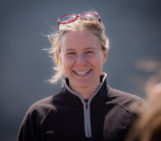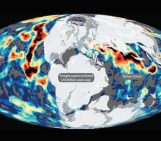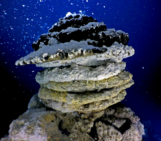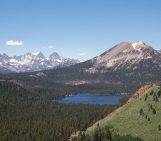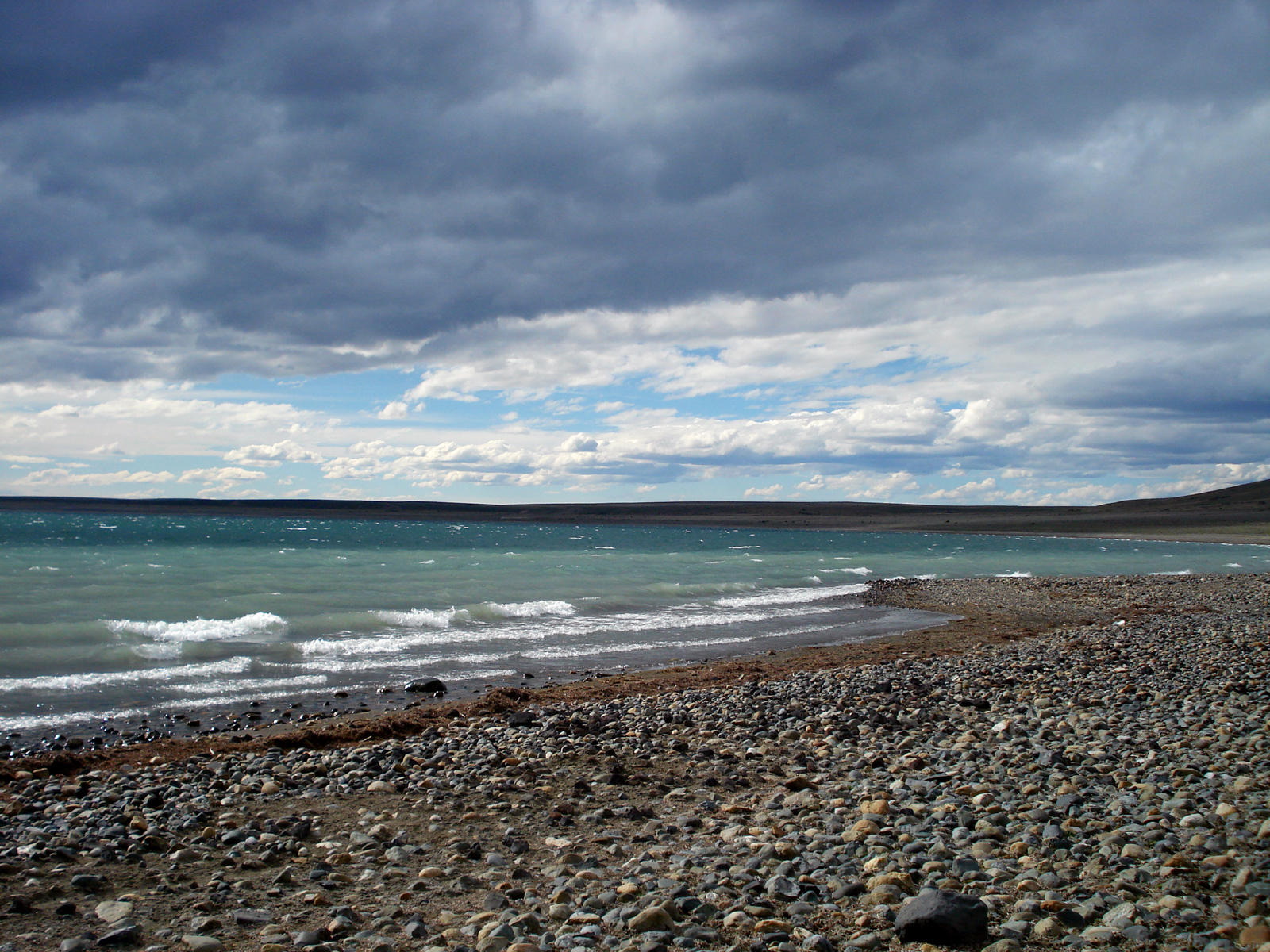
Patagonia Blues, Credit: Agathe Lisé-Pronovost (distributed via imaggeo.egu.eu)
The depths of the deep blue have fascinated explorers, scientists and humanity for centuries. And is it any wonder? 71% of the Earth’s surface is covered by oceans teaming with riches, from unique forms of life to precious metals.Even today, there are vast regions of the ocean floors that remain unexplored and of which we know very little about. Some might argue the oceans are the last unexplored frontier on the planet.
To quote Steinar Ellefmo, an Associate Professor at NTNU’s Department of Geology and Mineral Resources Engineering, “We actually know more about the moon than the seafloor.”
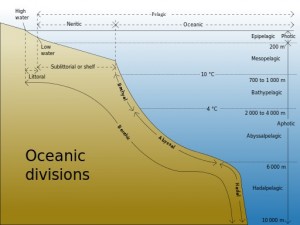
The divisions of the worlds oceans. Attribution: K. Aainsqatsi, distributed via Wikipedia.org. Click to enlarge.
The oceans are divided into zones according to depth, temperature and how much light those depths receive. The cold and dark waters of the twilight zone and beyond continue to be the focus of much attention and fascination today. But the pursuit of understanding the ocean deep is not new; it dates back at least 400 years, if not longer.
Reconstructing the historical records of the origins of the exploration of the ocean depths is not always easy. Hampered by incomplete recording of data, poor cross referencing between studies and limited value attributed to the findings made by non-scientific sea endeavours such as fishing, historical accounts can be piecemeal. A recent paper, published in the open access journal Biogeosciences, aims to address some of these inconsistencies, as well as setting the record straight on an age-old historical misrepresentation.
How deep are the oceans and seas?
The first scientific records of attempts to measure ocean depth in the bathyal zone (defined by Gage and Tyler as depths below 200m), date back to 1521: Magellan, a Portuguese explorer who organised the first Spanish expedition to the East Indies, unsuccessfully tried to sound the ocean bottom between two pacific coral islands. It wasn’t until the 18th century that the quest for understanding the ocean floor took off in earnest.
Expedition records show that a number of 18th century explorers were, allegedly, able to sound ocean depths up to 1950m (the John Ross expedition to the Northwest Passage of the Arctic). We now know that the depths of those soundings are around half that of the depths published and likely never exceeded 1100m.
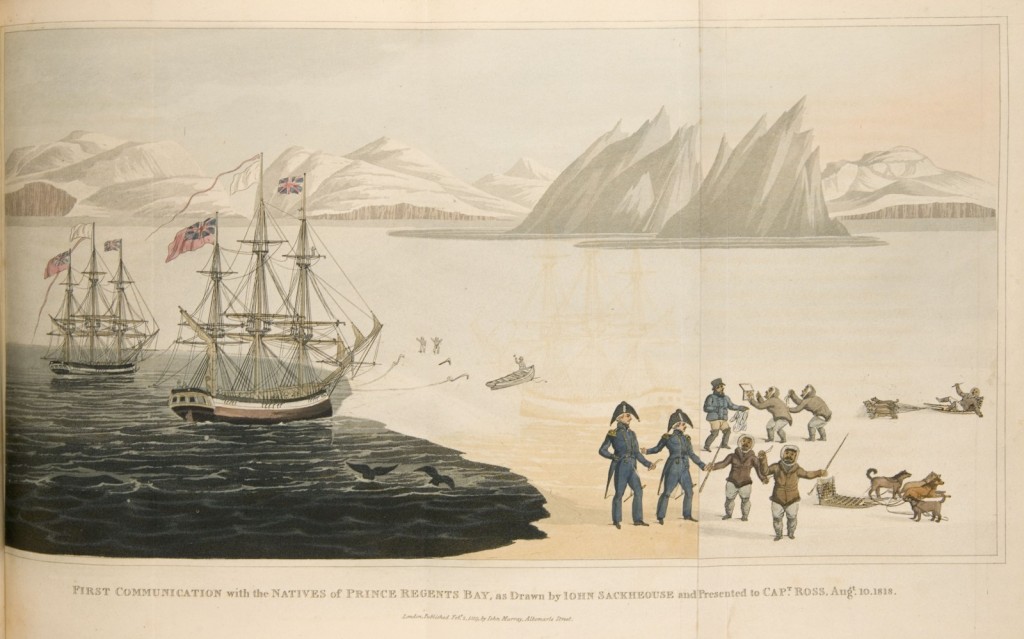
An encounter between British Royal Navy expedition, led by John Ross, and Inuit people on Baffin Bay, Greenland. The artist John Sacheuse (sometimes spelled Sackhouse) was an Inuit who acted as interpreter for Ross’s party.
The problem arose from the technique employed: a line and plummet was allowed to sink to the ocean bottom and the final length of the line recorded, but divergences between the apparent and true depths plagued measurements throughout the 18th and 19th centuries. For instance, The James Clark Ross expedition (1839 -1843), sounded the ocean depth east of Brazil at 8400m, but these depths are never encounter in the region. It wasn’t until dredging became possible, and common, place that depth measurements and sampling of the sea bed saw an improvement.
Life in the bathyal zone and beyond
The aims of taking measurements of the depth of the oceans were twofold: early explorers not only wanted to know how far down our oceans extend, but also whether the waters beyond where light can penetrate could sustain life.
French naturalist François Péron proposed that the sea beds were covered by eternal ice and so the deep waters of the oceans would be unable to sustain life. On theoretical grounds, British geologist Henry de la Beche, agreed with Péron’s concept of lifeless deep ocean waters. But it was the work of naturalist Edward Forbes during the mid-1800s which really cemented the notion of an azoic layer in the oceans. While involved in sea-dredging expeditions around The British Isles and the Aegean Sea, Forbes noticed that life became increasingly sparse with greater water depth and developed the theory that ocean waters were devoid of life at depths in excess of 550m.
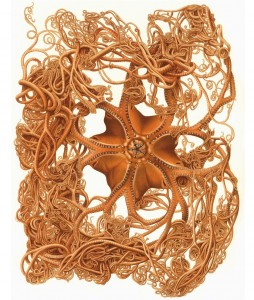
Basket star – Gorgonocephalus arcticus (Leach, 1819) (from Koehler 1909, pl. 9; as Gorgonocephalus agassizi; Stimpson, 1854). This is the species that was caught during the John Ross expedition. From Etter and Hess, 2015. Click to enlarge.
Contrary to popular belief, the earliest recovery of deep water life was not that of the famous basket star – a branched arm, sometimes medusa-like, sea star – by John Ross in 1818. The first published record is significantly older. Specimens of upper bathyal stalked crinoid (Cenocrinus asterius) were brought up by fishing lines in the Caribbean, with specimens reaching Europe in 1761 and 1762. However, the depths at which they had been recovered were never recorded. Deep-sea fish were also recovered from the Azores, Madeira, northern Spain, Sicily and Antillean islands, but often found in shallow waters or as dead specimens floating near shore.
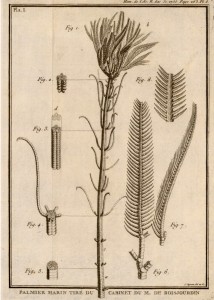
Cenocrinus asterius (Linné, 1767) (from Guettard, 1761, pl. 8; as “Palmier marin”). This was the first modern stalked crinoid that was described. From Etter and Hess, 2015. Click to enlarge.
The peculiar appearance, especially in the case of the stalked crinoids, and lack of detailed records as to what depths they’d been recovered from, meant that studies of these specimens focused on their potential to be ‘living fossils’, rather than geographical distribution within the water column. Even John Ross’, now famous, basket star was neglected from much of the early 19th century literature. Not only that, the issues with accurately ascertaining the depths of soundings and the belief that organisms became entangled higher up in the water column, recovery of specimens via this method was considered far less reliable than dredging.
Had the records of earlier soundings been accurately logged and all discoveries portrayed in the literature of the time, would Forbes’ theory of a lifeless deep ocean been debunked sooner? As well as correcting the long established notion that John Ross’ basket star was the first record of deep water life, the findings of the Biogeosciences review paper highlight the importance of not uncritically following previously published synthesis of historical literature.
By Laura Roberts Artal, EGU Communications Officer.
References
Etter, W. and Hess, H.: Reviews and syntheses: the first records of deep-sea fauna – a correction and discussion, Biogeosciences, 12, 6453-6462, doi:10.5194/bg-12-6453-2015, 2015.
Gage, J. D. and Tyler, P. A.: Deep-Sea Biology: a Natural History of Organisms at the Deep-Sea Floor, Cambridge University Press, Cambridge, UK, 504 pp., 1991.

